Cathédrale Notre-Dame de Paris is a historic Catholic cathedral. It is located on the Île de la Cité in Paris.
Cathédrale Notre-Dame de Paris is a masterpiece of Gothic architecture. Construction began in 1163 and took over a century to complete. The cathedral is famed for its stunning stained glass windows and intricate sculptures. It also houses many significant religious artifacts and treasures.
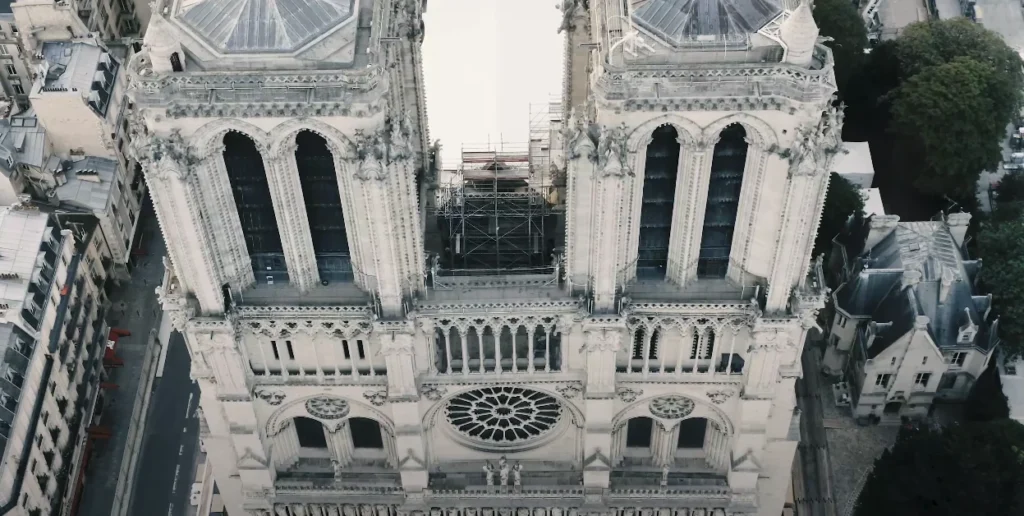
Visitors admire its majestic twin towers and the iconic gargoyles that guard the structure. The cathedral has been a site of major historical events, including Napoleon’s coronation. Despite suffering damage from a fire in 2019, it remains a symbol of resilience and cultural heritage. Notre Dame continues to attract millions of tourists and pilgrims from around the world each year.
History And Origins
The Cathédrale Notre-Dame de in Paris stands as a testament to Gothic architecture and centuries of French history. Its towering spires, intricate carvings, and magnificent stained glass windows draw millions of visitors each year. The History of Notre-Dame Cathedral Paris is filled with tales of kings, conflicts, and cultural evolution. This iconic landmark has witnessed significant events, making it a vital piece of France’s heritage.
Table of Contents
Construction Beginnings
The construction of the Cathédrale Notre-Dame de in Paris began in 1163. Maurice de Sully, the Bishop of Paris, initiated the project. The cathedral was built on the ruins of two earlier churches. The cornerstone was laid in the presence of Pope Alexander III. The construction spanned over 180 years, reaching completion in 1345.
Several phases marked the construction:
- Phase 1 (1163-1250): The choir and double aisles were completed.
- Phase 2 (1250-1300): The western façade, with its iconic towers, was constructed.
- Phase 3 (1300-1345): Final touches and decorative elements were added.
Builders used limestone from nearby quarries. Artisans and labourers worked tirelessly, employing both old and new techniques. The sheer size of the cathedral required innovative solutions. This long construction period allowed for continuous improvements and additions.
Architectural Influences
The History of Notre-Dame Cathedral Paris reveals a blend of architectural styles. Primarily, it showcases Gothic architecture, characterized by pointed arches, ribbed vaults, and flying buttresses. These features allowed for taller structures and larger windows.
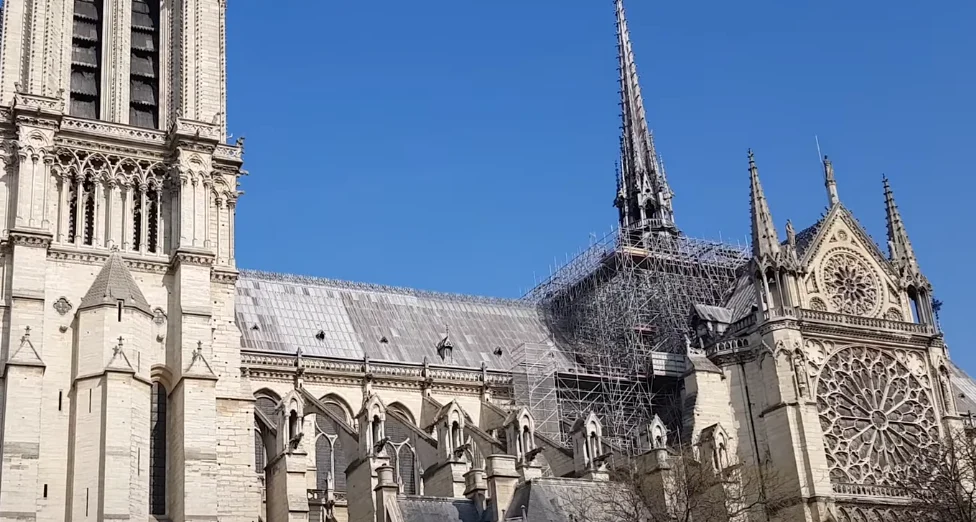
Several key influences shaped its design:
- Romanesque Style: Early phases showed Romanesque traits, such as thick walls and small windows.
- Gothic Innovations: The use of flying buttresses was revolutionary. They supported higher walls and larger windows.
- Rayonnant Style: This later Gothic style emphasized verticality and light. The rose windows are prime examples.
The cathedral’s design inspired many other structures across Europe. It set a precedent for future Gothic cathedrals. The combination of grandeur and intricate detail remains unmatched. Each element tells a part of the History of Notre-Dame Cathedral Paris, making it a masterpiece of medieval architecture.
Architectural Features
The Cathédrale Notre-Dame De in Paris is one of the most famous churches in the world. It stands proudly in the heart of Paris. People love its beautiful architecture. This cathedral is a great example of Gothic design. Many visitors come to see its amazing details. Let’s explore some key Notre-Dame Cathedral Paris architecture details.
Gothic Elements
The Cathédrale Notre-Dame De in Paris showcases many Gothic elements. These features make it unique and stunning. The tall spires and pointed arches draw the eyes upward. The large, round windows are called rose windows. They are filled with colourful stained glass. These windows tell stories from the Bible.
Gothic architecture also uses flying buttresses. These support the heavy walls and allow for more windows. The walls can be thinner because of these supports. Inside the cathedral, the ceilings are very high. The ribbed vaults make them look even taller. The light from the windows creates a magical atmosphere.
Some key Gothic features include:
- Tall spires
- Pointed arches
- Rose windows
- Flying buttresses
- Ribbed vaults
Famous Statues
The Cathédrale Notre-Dame De in Paris is also famous for its statues. Many of these statues are very old, and some are gargoyles. These statues are outside the cathedral. They have scary faces and look like monsters. People believed they protected the church from evil spirits.
Inside the cathedral, there are many statues of saints. These statues are beautifully carved. Each statue tells a story. One famous statue is of Saint-Denis. He is holding his own head. This shows his martyrdom. Another important statue is of the Virgin Mary. She has baby Jesus in her arms. This statue is very peaceful and serene.
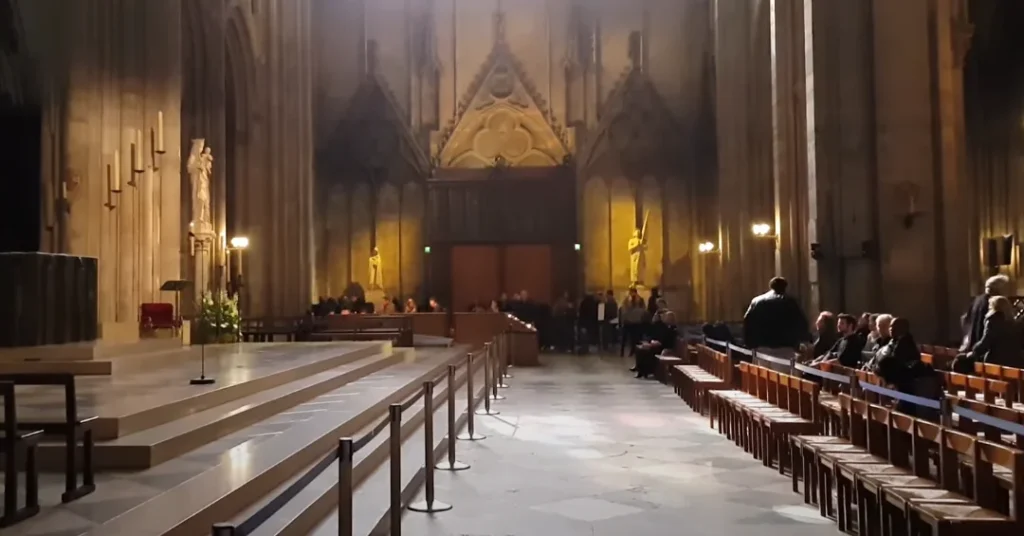
Some famous statues include:
- Gargoyles
- Saint-Denis
- Virgin Mary with baby Jesus
Visiting Notre-Dame Cathedral in Paris: Tips include taking time to appreciate these statues, which are a key part of the cathedral’s charm.
Cultural Significance
The Cathédrale Notre-Dame de Paris is a gem in the heart of France. It stands as a symbol of French culture and history. This majestic cathedral has witnessed centuries of events and has been a part of many historical moments. People from all around the world visit to admire its beauty and architectural marvels. The cultural significance of Notre-Dame Cathedral Paris is immense, influencing literature, art, and much more.
Literary References
Cathédrale Notre-Dame de in Paris has inspired many writers over the years. One of the most famous works is Victor Hugo’s “The Hunchback of Notre-Dame.” This novel brought the cathedral into the spotlight. It also highlighted the Gothic architecture and the stories hidden within its walls.
Other writers have also found inspiration here:
- Marcel Proust mentioned it in his works.
- Honore de Balzac wrote about its grandeur.
- Paul Claudel often referenced the cathedral’s beauty.
These literary works have made the cathedral even more famous. People read these books and dream of seeing the Notre Dame Cathedral in Paris. The Notre Dame Cathedral, Paris restoration news, also reminds readers of its ongoing importance.
Artistic Inspirations
Artists have always been drawn to the Cathédrale Notre-Dame de Paris. Its Gothic towers and rose windows are a favourite subject. Many painters have captured its beauty on canvas. Claude Monet painted the cathedral from different angles. His works show it in various lights and seasons.
Other artists who found inspiration include:
- Henri Matisse and his sketches.
- Pablo Picasso and his unique interpretations.
- Marc Chagall and his vibrant stained glass designs.
The top attractions, such as the Notre-Dame Cathedral in Paris,, also include many sculptures and carvings. These artistic pieces tell stories of faith and history. Visitors come to see these works and feel the creative spirit of the place. The news of the Notre-Dame Cathedral Paris restoration continues to inspire artists today.
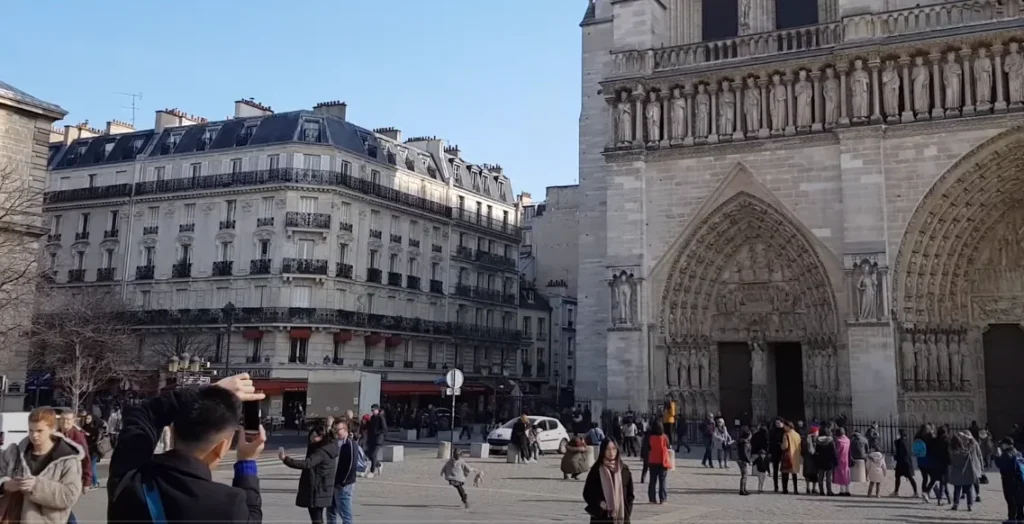
Renovations And Restorations
The Cathédrale Notre-Dame De in Paris is one of the most iconic landmarks in the world. Located on the Île de la Cité, this Gothic masterpiece has stood the test of time. Over centuries, it has witnessed many historical events and has undergone several renovations and restorations. The recent fire in 2019 brought global attention to the cathedral, underscoring the importance of preserving this cultural treasure.
Past Efforts
The Cathédrale Notre-Dame De in Paris has seen multiple restoration efforts, all aimed at maintaining its grandeur and architectural integrity. In the 19th century, the cathedral underwent significant restorations led by architect Eugène Viollet-le-Duc.
- 1831: Victor Hugo’s novel “The Hunchback of Notre-Dame” spurred interest in restoring the cathedral.
- 1844-1864: Viollet-le-Duc’s extensive restoration work, including the addition of the iconic spire.
- 1960s: Cleaning and reinforcing the stone structure to prevent further decay.
- 1990s: Further cleaning and restoration of the facade and sculptures.
These efforts have been crucial in preserving the cathedral’s structural integrity and aesthetic beauty. The Notre Dame Cathedral Paris tour guide offers insights into these historical restorations. Visitors can learn about the meticulous work that has kept the cathedral standing through the centuries.
Post-fire Restoration Plans
The 2019 fire caused severe damage to the Cathédrale Notre-Dame De in Paris. The fire destroyed the spire and much of the roof, but the main structure survived. Restoration plans were immediately set in motion to repair and restore the cathedral to its former glory.
Key elements of the restoration plans include:
- Rebuilding the spire: Using original designs and materials wherever possible.
- Roof restoration: Replacing damaged timber with fire-resistant materials.
- Interior repairs: Fixing the vaulted ceilings and cleaning smoke damage.
- Stained glass windows: Restoring the iconic windows to their original splendour.
Events at Notre Dame Cathedral Paris will also help raise funds for the restoration. The goal is to reopen the cathedral by 2024, just in time for the Paris Olympics. This ambitious timeline reflects the global commitment to preserving this symbol of cultural heritage.
Visiting The Cathedral
The Cathédrale Notre-Dame de in Paris is a famous landmark known for its stunning architecture and rich history. People from all over the world visit this cathedral, which is a must-see when in Paris. The cathedral has witnessed many historical events, and its beauty and history make it a top attraction.
Visitor Information
It is important to know the Notre-Dame Cathedral Paris visiting hours. The cathedral is usually open from 8 AM to 6:45 PM. On weekends, it remains open until 7:15 PM. Entry is free, but donations are welcome. Special tours are available for a small fee.
Here are some key points to remember:
- Opening hours: 8 AM to 6:45 PM
- Weekend hours: 8 AM to 7:15 PM
- Entry fee: Free (donations welcome)
- Special tours: Available for a small fee
It is best to visit early in the morning. This helps avoid the crowds. Dress modestly when visiting. The cathedral is a place of worship. Flash photography is not allowed inside. Silence is appreciated inside the cathedral.
Nearby Attractions
There are many attractions near the Cathédrale Notre-Dame de in Paris. One such place is the Sainte-Chapelle, known for its stunning stained glass windows. Another nearby attraction is the Conciergerie, which was once a royal palace and prison.
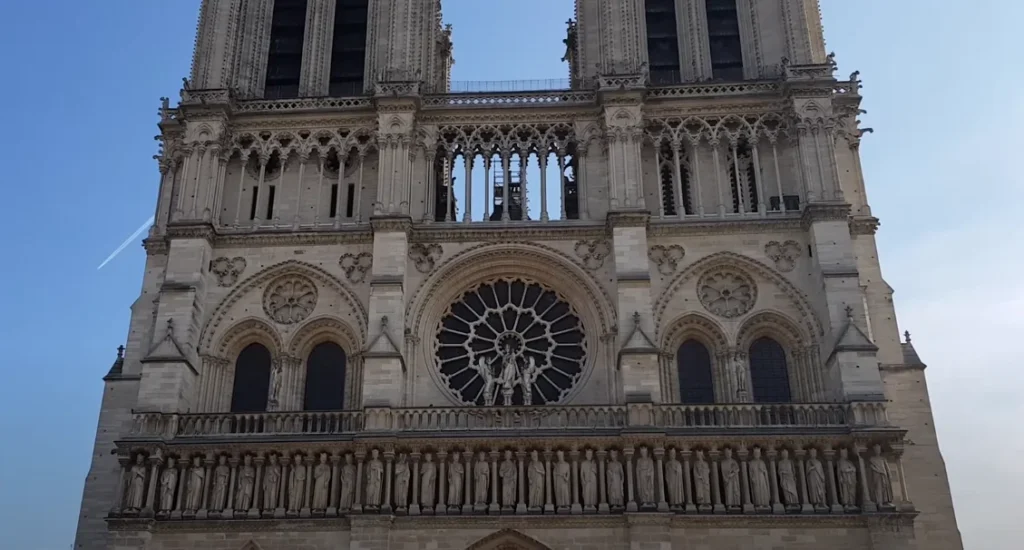
Here is a list of nearby attractions:
- Sainte-Chapelle: Famous for stained glass windows
- Conciergerie: Former royal palace and prison
- Île de la Cité: Historic island in the middle of Paris
- Pont Neuf: Oldest standing bridge across the Seine River
Exploring these places can make your visit more enjoyable. Each spot has its own unique charm. Walking around these areas provides a deeper understanding of Paris. You can enjoy beautiful views of the Seine River. Remember to bring a camera. There are many photo opportunities around.
Frequently Asked Questions
What Is The History Of Notre-dame Cathedral?
Notre-Dame Cathedral was built between 1163 and 1345. It is a prime example of French Gothic architecture.
Where Is Notre Dame Cathedral Located?
Notre-Dame Cathedral is located on the Île de la Cité in the heart of Paris, France.
Is Notre Dame Cathedral Open To Visitors?
Yes, Notre-Dame Cathedral is open to visitors. However, check for any restrictions or renovations before planning your visit.
What Are The Main Features Of Notre-dame?
The main features include its flying buttresses, gargoyles, stained glass windows, and the iconic twin bell towers.
How Can I Reach Notre Dame Cathedral?
You can reach Notre-Dame Cathedral by metro, bus, or foot. The nearest metro station is Cité on Line 4.
Conclusion
The Cathédrale Notre-Dame de Paris is a timeless symbol of French heritage. Its stunning architecture and rich history captivate visitors. A trip to Paris is incomplete without experiencing this iconic landmark. Plan your visit to witness the beauty and grandeur of Notre Dame for yourself.


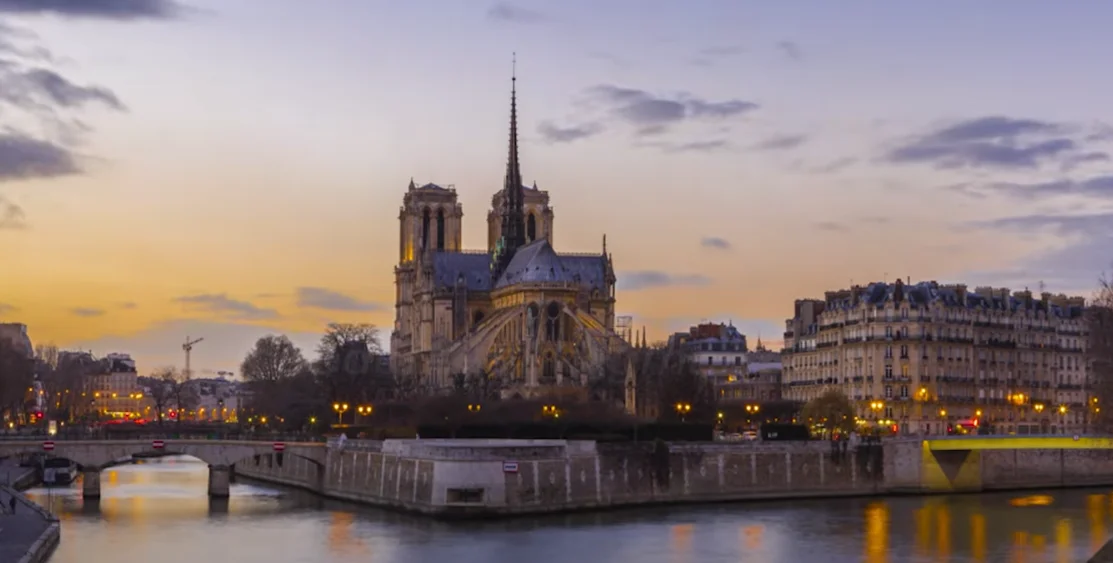
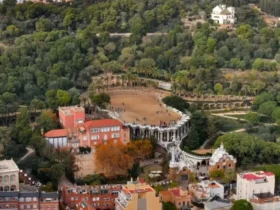

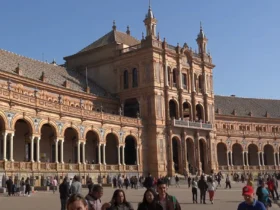
Leave a Review